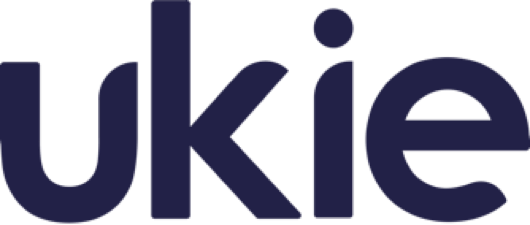Author: Kathryn Gill, Consultant, Berwick Partners
UKIE’s first-ever industry census report suggested that the rates of autistic adults working in Gaming are between three and four times the rate in other employment sectors. This points to the sector practising more inclusive recruitment than many. However, is the opportunity of a long-term career being offered, or just a job? Are neurodiverse individuals reaching their full potential?
There is very little data to answer this question effectively. No statistics have yet been published that show the number of neurodiverse individuals operating at each level of seniority in the industry i.e., graduate, mid-level, director, c-suite.
However, having discussed the topic with a large number of Gaming professionals sitting in a variety of functions, the ‘soft’ evidence points to very few neurodiverse individuals progressing to c-suite roles. And the questions that need to be answered are why and what can leadership teams do about this?
The basics
Despite the term ‘neurodiversity’ being coined in 1998, it is an area that many are unaware of and that others are only just starting to understand. Autism Spectrum Disorders, Dyslexia, ADHD and Dyspraxia, as well as the lesser-known Dyscalculia, Dysgraphia, Meares-Irlen Syndrome, Hyperlexia, Tourette Syndrome, OCD and Synesthesia are all referred to as a form of neurodiversity.
The current concept of neurodiversity has a basis in science; however, many believe the idea there is one ‘normal’ brain type, is an unhealthy narrative when educating people on the topic, perpetuating bias in the workplace.
The why
There is a lack of strategic importance placed on neurodiversity:
C-suite teams have a lot of plates to spin, there is no question. And those plates are ranked in terms of strategic importance or urgent firefighting. Unfortunately, in many gaming businesses, neurodiversity is only ever a spinning plate if it rears its head as an urgent issue that needs to be dealt with. Perhaps an individual with dyslexia has raised their hand to discuss their need for a piece of software. This problem is solved in isolation and the focus reverts to other areas, but the reality is that there are significant commercial benefits to increasing the strategic importance of neurodiversity in your business.
The reported strengths of being neurodivergent are extensive and differ across the conditions. However, a snapshot of some of the strengths are: Intense focus, high integrity, creative problem solving, critical thinking, determination, observational skills, ability to work under pressure, intense energy, ability to multi-task, perseverance, intuitive ability, strategic thinking, strong verbal communication skills, enhanced memory and enhanced self-control.
Many of these strengths are listed as traits of effective leaders by the likes of HBR, Forbes and CIPD. And effective leaders drive effective businesses.
There are question marks against how genuine inclusion policies really are and there is a lack of ingenuity in L&D strategies:
Many individuals may not want to disclose their divergence. Of those we spoke with, they admitted that this was largely driven by fears of decreasing their chances of progression, negative judgement, stereotypical views, or they would be perceived as trying to make excuses and seeking ‘special treatment’.
Despite the stereotypes that portray conditions at their obvious extreme, many neurodiverse traits are very often hidden and invisible. Couple this with the fear of disclosure that many neurodiverse individuals face, and it results in people flying under-the-radar without support.
Whilst there must be a commitment to fostering highly inclusive environments whereby individuals are more open to disclosing their divergence, that is not the only answer. Some individuals may simply never want to provide that level of personal information.
Therefore, the solution is not rooted in expecting neurodiverse individuals to shout from the rooftops about their conditions, but in leadership teams making neurodiversity a strategic priority. This then allows the right impetus to be placed on education, innovative L&D solutions, and specific inclusion strategies.
If your approach to neurodiversity is to ‘fix’ and solve each problem as it emerges, you are failing to adequately support neurodiverse individuals break through glass ceilings.
There is a lack of leadership role-models who are openly neurodiverse:
As it stands, the generation that currently occupy top-level leadership roles progressed through school systems that were not able to diagnose neurodivergence. Therefore, whilst some of these individuals may have mild Autism Spectrum Disorder, Dyslexia, ADHD or Dyspraxia, they themselves are unaware of it.
As with any under-represented community, it is inspirational and healthy to see leaders who look like them, sound like them and think like them.
I spoke to two leaders who received a diagnosis of ADHD and Dyslexia later in their life, having already secured a leadership role. When discussing whether they are open about this in their workplace, both individuals explained that whilst they have made their CEO or Chair aware, they have not disclosed the information to the entire business for fear of judgement. This reiterates the points made earlier around inclusion.
What can leadership teams do:
We must acknowledge that a large proportion of Gaming leaders are not adequately informed or equipped to support neurodiverse individuals reach their potential.
Tackling this topic and ensuring that neurodiversity becomes – and remains – a strategic priority leaders are committed to, is no mean feat. This is a complex challenge, that requires complex solutions. But there are initial steps that can be taken…
Educate yourself, educate the workforce:
It is that age old saying; knowledge is power. And for an area that is nuanced, complex and diverse, it could not be truer. Before you can affect change, you must educate yourself. Please see below for free resources on neurodiversity and diversity in the Games industry:
Workplace Neurodiversity: The power of difference by the Institute of Leadership and Management
How should leaders answer the needs of Neurodiverse staff? By the Institute of Leadership Management
1 in 10 HR professionals say their organisation is now focusing on neurodiversity at work by CIPD
Neurodiversity definitions by Exceptional Individuals
UK Games Industry Census 2021 by UKIE
Implement genuine Inclusion strategies that have commitment from the CEO:
Successful inclusion comes from the top – this is not just a problem for neurodiverse individuals, it is a problem for everyone and ‘neurotypicals’ need to stand as allies. Please see below for free resources on inclusion:
Let’s focus on inclusion by Berwick Partners
Inclusivity is a culture not a policy by HR Grapevine & Berwick Partners
Provide CHROs and specialists with the freedom and resource to implement innovative L&D strategies:
Leadership teams need to enable their HR and people teams to develop L&D strategies that are both inclusive and effective. For example, employees could be given access to an L&D platform whereby they can enrol in various courses on an anonymous basis. This negates the issue of a neurodiverse individual being cautious about raising their hand.
L&D needs to be more inclusive full-stop, rather than situational. Please see below for free resources on effective and inclusive approaches to L&D:
Learning & Development Evolving Practice by CIPD
For more information, please contact Kathryn Gill,

